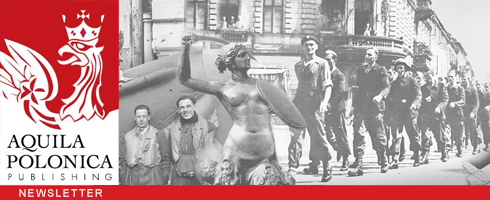July 4, 1943 – Sikorski Dies in Plane Crash
 July 4, 1943: Polish Prime Minister and Commander-in-Chief General Władysław Sikorski dies when his plane crashes off Gibraltar. The B-24 crashed into the sea just 16 seconds after takeoff, killing all aboard except the Czech pilot.
July 4, 1943: Polish Prime Minister and Commander-in-Chief General Władysław Sikorski dies when his plane crashes off Gibraltar. The B-24 crashed into the sea just 16 seconds after takeoff, killing all aboard except the Czech pilot.
Among the eleven who died were General Sikorski; Sikorski’s daughter Zofia Leśniowska; the Polish Army Chief of General Staff, Major General Tadeusz Klimecki; the Polish Army Chief of Operations, Colonel Andrzej Marecki; and two British members of Parliament, Brigadier John Percival Whiteley OBE and Colonel Victor Cazalet MC.

At the time of his death, Sikorski faced great political challenges. Cautious diplomatic deals with the Soviet Union were shattered when the Katyń Forest Massacre was announced by Germany in April 1943. The Soviet Union tried to blame the massacre on Germany, but Sikorski called for an independent Red Cross investigation on the matter. The Soviets used Sikorski’s request for a neutral investigation as an excuse to sever diplomatic relations with the Poles.
The Polish government-in-exile lost influence with the Western Allies after Sikorski’s death. No other Polish official had Sikorski’s stature or credibility among the Western leaders, with whom he had a close working relationship.
The loss of Sikorski just four days after the Gestapo arrested General Grot-Rowecki, commander of the Armia Krajowa (AK or Home Army), was a huge blow to Poland and its position within the Allies — as Stalin was seeking to maneuver the U.S. and Britain into agreeing that Poland would fall into the Soviet sphere of influence after the war.

Sikorski was buried at the Polish War Cemetery in England, but his remains were moved to Poland after the fall of communism, and are now interred at Wawel Castle, Kraków.
A British Court of Inquiry investigated the crash. After interviewing numerous witnesses, the Court concluded:
“(b) The cause of the accident was, in the opinion of the Court, due to the aircraft becoming uncontrollable for reasons which cannot be established. The pilot, having eased the control column forward to build up speed after take-off, found that he was unable to move it back at all, the elevator controls being virtually jammed somewhere in the system. It is impossible, from the evidence available and examination of the wreckage, to offer any concrete reason as to why the elevator system should have become jammed.”
Questions remain even today as to whether Sikorski’s plane was sabotaged — given the complex political situation at the time, various theories of sabotage have blamed the British, the Germans, the Soviets and a rival Polish faction opposed to Sikorski within the government-in-exile.
Sikorski is mentioned in a number of our previous blog posts, which might be of interest, including:
May 20, 1881 – General Władysław Sikorski Born
June 18, 1940 – Sikorski to Churchill: Will Britain Continue to Fight?
June 14, 1940 – Germans Enter Paris
The Polish Cipher Office & the Miracle on the Vistula












No comment yet, add your voice below!